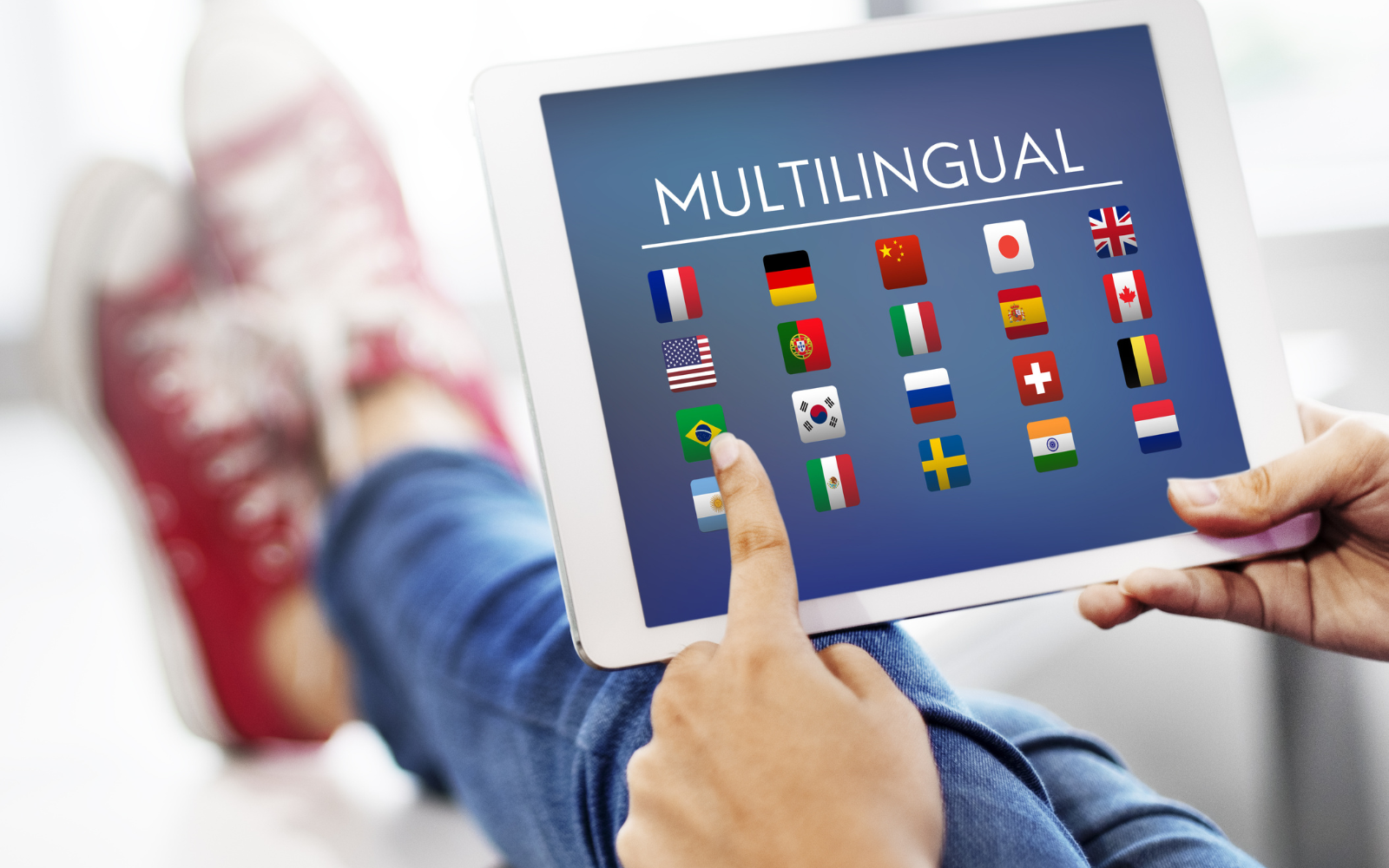Envision your website as a vibrant marketplace, bustling with visitors from every part of the world, each conversing in their native language. This is the dynamic potential of multilingual SEO, a strategy that surpasses simple translation, diving deep into the nuances of search engine optimization across different linguistic environments.
By leveraging multilingual SEO, you open the door to engaging a diverse audience, enhance user interaction, and build lasting loyalty among those who value content in their own language.
In this article, we’ll explore the essence of multilingual SEO and address pivotal queries such as optimizing for multilingual websites, the intricacies of multi-language site SEO, and the tangible benefits that come with implementing these strategies.
Prepare to embark on a journey that will transform how you think about SEO and international reach, ultimately leading to a more inclusive and globally recognized online presence.
The Fundamentals of SEO for Multi-Language Website

Navigating the digital world with a multilingual website is akin to being a polyglot in a bustling international bazaar. Multilingual SEO is the art and science of optimizing your web presence so it shines brightly across different linguistic landscapes. But what exactly does this entail?
At its core, multi-language website SEO involves tailoring your website’s content and structure to meet the search preferences and behaviors of users speaking different languages. It’s not just about translating words; it’s about cultural adaptation, understanding regional search trends, and aligning your digital strategies with the unique nuances of each target language.
The essence of multilingual SEO is to boost your website’s prominence on search engines across different language versions. Properly implemented, it ensures your site surfaces in search results that are pertinent to each language-speaking demographic, attracting organic traffic from all over the globe.
This methodology unlocks numerous opportunities, enabling your business to reach a wider audience, deepen engagement, and cultivate trust with users who appreciate content tailored to their linguistic needs.
Multilingual SEO breaks down geographical barriers, making your digital content reachable and engaging for audiences worldwide. Emphasizing this approach means you’re not merely fine-tuning for search engines; you’re crafting an online presence that is inclusive and impactful for users, no matter what language they speak. This strategy ensures that your
The Benefits of Implementing Multilingual SEO

Imagine having the ability to converse fluently with audiences worldwide, each in their own language. This is the magic that multilingual SEO brings to your digital presence. But why should you invest in this strategy? Let’s unravel the unique advantages it offers.
First and foremost, multilingual SEO dramatically expands your audience reach. When your website speaks multiple languages, it breaks down barriers, inviting users from different linguistic backgrounds to explore your content. This inclusivity not only attracts more visitors but also fosters a sense of connection and relevance, as people naturally gravitate towards content in their native tongue.
Another significant benefit is the enhancement of user experience. Multilingual SEO ensures that your site’s visitors can navigate and consume content effortlessly, without the friction of language barriers. This seamless experience increases the likelihood of longer site visits, higher engagement rates, and ultimately, better conversion rates. When users feel understood and catered to, their trust in your brand grows exponentially.
Furthermore, SEO for multilingual site can significantly boost your site’s credibility and authority. A website that offers well-optimized, localized content demonstrates a commitment to serving diverse audiences. This dedication to cultural sensitivity and relevance enhances your reputation, making your brand more trustworthy and appealing in the eyes of international users.
In essence, investing in multilingual SEO is not just about reaching more people—it’s about creating meaningful connections, offering exceptional user experiences, and building a robust global presence. By embracing this strategy, you’re positioning your business to thrive in an increasingly interconnected world, where language is no longer a barrier but a bridge to new opportunities.
Crafting a Successful Multilingual SEO Strategy

Embarking on the journey of SEO for multilingual website requires more than just a simple translation of your existing content. To truly resonate with global audiences, you need a carefully crafted strategy that considers linguistic and cultural nuances. Here’s how to create a winning multilingual SEO plan:
- Comprehensive keyword research ─ Start by diving deep into keyword research for each target language. It’s crucial to understand that direct translations of keywords might not always capture the same search intent. Use tools and local insights to identify the most relevant and frequently searched terms in each language. This step ensures your content aligns with what users are actually looking for in their native tongue.
- Harness the power of hreflang tags to guide search engines on the linguistic and regional focus of your web pages. Implementing these tags correctly is crucial to avoid content duplication and ensures visitors land on the appropriate language version. This technical element is indispensable for upholding the relevance and coherence of your multilingual content.
- Simply translating text isn’t sufficient. It’s essential to develop high-caliber localized content that connects naturally with local audiences. This process requires not just translation, but also the adaptation of cultural nuances, idioms, and contextual elements to truly resonate with each specific group. Such localized content reflects a genuine commitment to authentically serving each market.
- Each country has its own dominant search engines ─ While Google reigns globally, engines like Baidu in China and Yandex in Russia are pivotal in their regions. Tailoring your website to the algorithms and standards of these local search engines is crucial for boosting visibility. Navigating these complexities can be challenging, so partnering with a Russian SEO company (for example the company webernetic-family) can provide the expertise needed for successful market entry, ensuring you meet local SEO requirements effectively.
- Local backlinks and social signals ─ Building local backlinks and encouraging social engagement in each target market enhances your site’s authority and relevance. Partner with local influencers, contribute to local blogs, and engage with local communities to generate high-quality backlinks and social signals that boost your SEO performance.
Crafting an effective multilingual SEO strategy is about more than just translating content; it’s about understanding and embracing the unique characteristics of each target market. You forge a solid multilingual SEO strategy that propels worldwide success through meticulous keyword analysis, effective use of hreflang tags, crafting exceptional localized content, fine-tuning for regional search engines, and securing local backlinks.
Technical Foundations of Multilingual Websites

Mastering the technical aspects of multilingual SEO is like constructing a global landmark. Each detail is crucial for ensuring your site performs well internationally.
- Thoughtful URL structure ─ Choose between subdomains (e.g., en.example.com), subdirectories (e.g., example.com/en/), or country code top-level domains (ccTLDs) (e.g., example.co.uk). Each has its benefits: subdomains offer clear separation, subdirectories consolidate SEO power, and ccTLDs provide strong local relevance.
- Strategic server location ─ Server location affects load times for international users. A content delivery network (CDN) distributes content globally, ensuring faster load times and better user experiences worldwide.
- Hreflang tags mastery ─ Correct hreflang tag implementation signals to search engines the intended language and region for each page, preventing duplicate content issues and ensuring users land on the right version of your site.
- Preventing content redundancy ─ Implement canonical tags to guide search engines to the preferred version of a page. This is particularly crucial when content exists in multiple languages, ensuring the correct version takes precedence.
- Consistent site architecture ─ Maintain a logical and consistent structure across all language versions to aid navigation and search engine crawling. Consistency in menus, navigation, and design is key.
- Language-specific metadata ─ Customize metadata (titles, descriptions) for each language to enhance relevance and click-through rates from search engine results pages (SERPs).
- Mobile optimization ─ Ensure your multilingual site is mobile-friendly with responsive design and fast loading times, which are critical for user experience and SEO performance.
By thoughtfully designing your URL pathways, utilizing content delivery networks, perfecting the use of hreflang tags, eliminating content duplication, maintaining a uniform site structure, and ensuring mobile optimization, you guarantee that your multilingual website not only reaches but also resonates with audiences worldwide.
Stepping into the realm of multilingual SEO is akin to flinging open your business doors to the world stage. By grasping its core principles, leveraging its advantages, crafting savvy strategies, and fine-tuning technical aspects, you set the stage for a global presence. Multilingual SEO transcends mere technicality; it’s a pledge to embrace diversity and a conduit for connecting with varied audiences.

